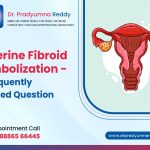Brain Stroke is a condition caused due to the damage of blood vessels. A Brain Stroke is an emergency medical situation which requires immediate and proper medical care. If you delay getting medical help even a minute, it may lead to severe complications. When you see someone with a stroke, don’t get panic, think and call for help immediately.
What Is Brain Stroke?
A brain stroke which is also called brain attack occurs when a blood vessel is blocked or ruptures and prevents carrying oxygenated blood and nutrients to your brain. Therefore, when your brain suffers a lack of blood flow, it stops working. The cells in your brain start to die, resulting in stroke eventually.
Your brain requires oxygen to work systematically. Even though your brain weighs just 2% of your body weight, it consumes 20% of the oxygen daily you breathe. Your brain controls other body functions like breathing and digestion. A brain stroke can end up with brain damage, long-lasting disabilities, and sometimes even death.
Types Of Brain Stroke
Brain stroke is the fifth leading cause of death worldwide. Brain Strokes are classified into three different types.
- Ischemic stroke
- Hemorrhagic stroke
- Transient ischemic attack (TIA)
Ischemic stroke accounts for 87% of all brain strokes. The condition is caused due to a clot in the artery that prevents the flow of oxygen-rich blood to your brain. Blood clots are the common causes of the blockages leading to ischemic strokes.
A hemorrhagic stroke occurs when an artery in your brain ruptures and leaks blood. The accumulation of leaked blood exerts high pressure on your brain cells and damages them. High blood pressure and aneurysms or arteriovenous malformations (AVMs) are the common causes of this condition. Hemorrhagic stroke is classified into two types, namely intracerebral haemorrhage, subarachnoid haemorrhage.
Transient Ischemic Attack (TIA) is different from the other two types of brain stroke because the blood flow to your brain is blocked only for a short period. A TIA can be considered as a warning sign of future brain stroke.
Signs and Symptoms Of Brain Stroke
The signs & symptoms of a stroke appear when the damaged part of your brain controls your body parts. The symptoms of the stroke include:
- Trouble to speak or slurred speech
- Unable to understand while others speak
- Paralysis
- Numbness in the face, arm or leg
- Vision problems in one or both eyes
- Severe headache
- Trouble walking.
- Loss of balance or coordination
- Dizziness
Some people might also experience symptoms like uncontrolled bladder or bowel movements, depression and difficulty to control or express their emotions. Stroke can lead to chronic health problems. Depending upon the severity of the stroke patient might experience temporary or permanent disabilities.
Diagnosis Of Brain Stroke
A stroke occurs suddenly. To avoid complications, the patient should receive treatment within 3 hours after starting symptoms. There were several diagnostic procedures available to determine the type of stroke, which include:
- Physical examination
- Blood tests
- CT scan
- MRI scan
- Carotid ultrasound
- Cerebral angiogram
- Echocardiogram
The type of stroke can be confirmed by using a brain scan only in a hospital environment.
Causes And Risk Factors Of Brain Stroke
The leading cause of stroke is a blocked blood vessel and leakage of blood due to rupture or bursting of the blood vessels in your brain. However, many factors put you at risk of these conditions.
- High blood pressure
- High cholesterol
- Smoking and chewing tobacco products
- Physical inactive people
- Heavy drinking
- Using illegal drugs
- Heart disease – defective heart valves, atrial fibrillation, irregular
- heartbeat and clogged arteries due to fat deposits
- Diabetes
- Medications like blood thinners
- Increasing age
- Gender – women are at less risk of having a stroke compared men
- hereditary
- Obese or overweight
- Aneurysms
Know your risk factors of stroke, and follow the instructions of your doctor, adopt a healthy lifestyle to prevent a stroke.
Treatment For Brain Stroke
Mechanical thrombectomy: It is a minimally-invasive procedure which is also called Endovascular mechanical thrombectomy where an interventional radiologist removes the blood clot from an artery using specialized equipment.
Fluoroscopy or continuous x-ray technique is used by the doctor to guide the instruments through the arteries to reach the stroke-causing blood clot in the brain and extracts it.
The radiologist makes a small needle prick in your wrist or the thigh, to access the artery that leads to the clot. Once the prick is made, the doctor sends a tube called a catheter through the artery and then a tiny net-like device called a stent retriever is inserted through the catheter.
Now it is guided to the blockage the stent retriever is pushed through the clot. After the stent device passes through, it opens up to the artery wall size. This is the point where the stent retriever captures the clot, and the radiologist pulls the retriever backward, removing all the clot at once.
Often mechanical thrombectomy is used to treat acute ischemic stroke caused by large arterial intracranial occlusion.
Catheter-guided Thrombolysis: Catheter-guided endovascular surgical techniques have transformed the therapeutic options for deep vein thrombolysis(DVT).
They have altered the risk-benefit proportion of intervention. Now, various techniques have evolved and catheter-directed thrombolysis (CDT) is one of the best among them.
CDT procedure involves the insertion of a catheter into your venous system and guided to the target using an x-ray imaging or the fluoroscopic technique. Now a thrombolytic agent like tPA is directly infused into the thrombus.
The agent dissolves the clot and reopens the blocked path of the vein. Usually, the infusion of a thrombolytic agent continued for at least 24 hours.
Many studies have proved that CDT is an efficient procedure to restore the venous patency and reduces symptoms of acute DVT. Like thrombectomy, CDT is also helpful in preventing Post-thrombotic syndrome (PTS).
In fact, the risk of PTS is directly associated with the remaining amount of thrombus after CDT treatment. If the thrombus is removed 90% or more, then the PTS is negligible. CDT treatment even reduces the risk of recurrent DVT.
Aneurysm Coiling And Stenting: Aneurysm coiling and stenting are innovative procedures done to block the flow of blood into an aneurysm (a weakened artery wall). It is medically termed as endovascular coiling or stenting and it is a recent procedure used to treat the patient with brain aneurysms since 1991.
It is a minimally invasive surgical procedure, which means there is no need to open your head to treat the brain aneurysm, instead, a catheter is used to access the aneurysm in your brain. In this procedure, coils, stents or other tools are inserted into your blood vessel through the femoral artery from the groin/hip and guided to the aneurysm in the brain to block the blood flow.
After giving general anaesthesia, a tube or sheath called a catheter is inserted via the entry point and pushed gently to the aneurysm with the help of real-time x-ray images of an angiogram. Now a microcatheter is inserted through the main catheter and gently pushed inside to the aneurysm.
A series of soft coils moved through the microcatheter into the aneurysm itself. These coils remain permanently and seal the opening of an aneurysm and prevent the blood from entering into the aneurysm.
These coils are shaped like a spring and are made of soft platinum metal. Sometimes, a balloon is fixed parallel to the coiling to provide support to the coils, which is called balloon-assisted coiling. Once the coiling is done the balloon is removed.
Sometimes a hollow tube of metal mesh called a stent is inserted into the damaged part of the blood vessel and make sure the inserted coils remain safe inside the aneurysm. This is called stent-assisted coiling.
Once the radiologist confirms the blood flow has stopped into the aneurysm, the catheter and other instruments are withdrawn gently from the vein and incisions are closed with small stitches or plugs.
In recent years advanced stents called flow-diverter have been introduced to treat aneurysms by promoting blood flow away from aneurysms without placement of coils.
A brain stroke can result in some life-changing complications. Early treatment with certain medicines can reduce brain damage. Other treatments are also





